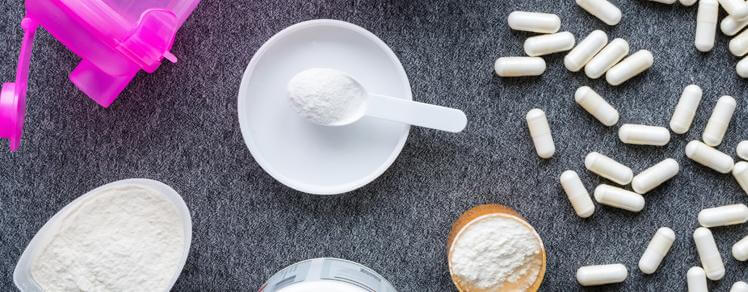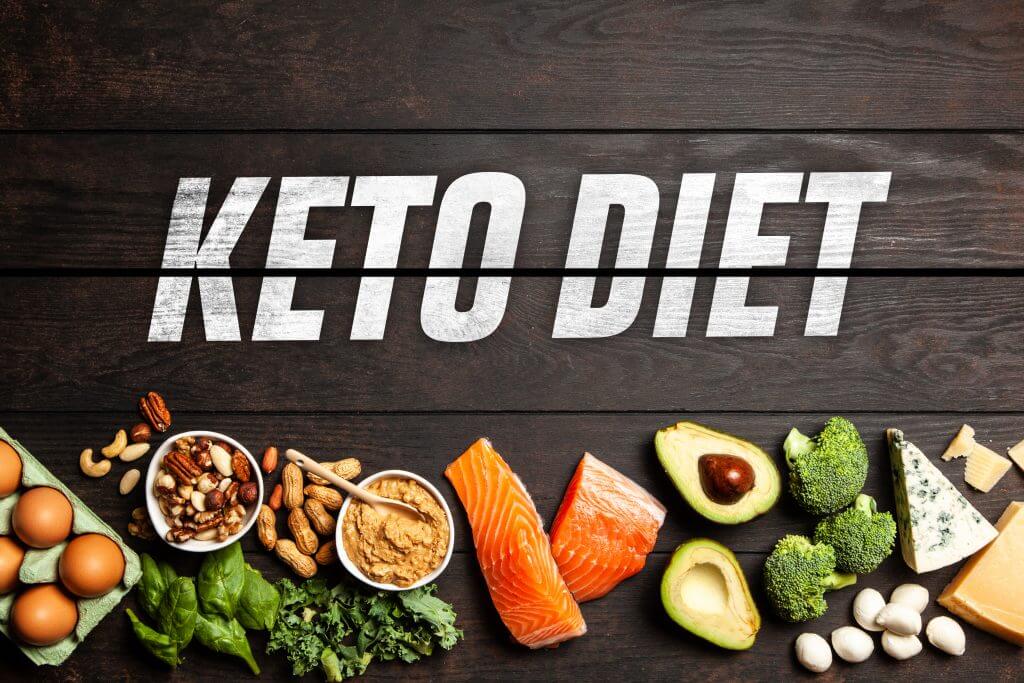Top 5 Protein Powders – What should I take?
Protein powder is a convenient source of amino acids necessary for muscle growth and repair. As a macronutrient, protein is also vital for maintaining healthy bones, hair, skin and nails; synthesizing biochemicals like enzymes and neurotransmitters. Protein even serves as an alternate energy source when carbohydrates are low!
For those who are struggling to get enough protein from whole foods, a good protein powder can make all the difference. Protein powder also offers an alternative to meats, poultry, fish and seafood, which can get rather expensive if buying high-quality organic, grass-fed, and wild-caught.
Nowadays, endless options of protein powder are available: whey protein, casein, egg white protein, collagen, soy, hemp, rice, and even pea protein to name the most popular. You may be wondering, what’s the best protein powder for me?
Here are three things to consider when choosing a protein powder:
- Amino acid profile
Your body uses 20 different amino acids, but only nine are “essential,” meaning the body cannot manufacture them and must obtain them from food. These include leucine, isoleucine, valine, histidine, lysine, methionine, phenylalanine, threonine, and tryptophan. Any Protein Powder source that supplies all nine essential amino acids is considered “complete.”
Three of these nine, the branched chain amino acids (or BCAAs), are key for muscle growth: leucine, isoleucine, and valine.1 Research supports of 2:1:1 ratio of leucine to isoleucine and valine, with at least 2.5 grams of leucine to maximize muscle protein synthesis.2 It’s worth noting, while many Protein Powder companies do not disclose the amino acid profile of their Protein Powders, but M.A.N. Sports does!
- Digestibility
It doesn’t matter how stellar the amino acid profile is if a protein is not well-digested. Researchers test various protein sources by measuring how much of the administered protein makes it through the small intestine, which in turn, tells how much the body was able to digest.
The latest and greatest Digestible Indispensable Amino Acid Score (DIAAS) ranks protein sources based off amino acid profile and digestibility. This is the scoring system I used to pick the “top five protein powders” listed in this article. Other measures of protein quality, such as protein efficiency ratio, biological value, and net protein utilization are no longer considered very accurate or useful.
- Tolerability
Tolerability is a big deal! Ironically, some of the best protein sources (milk, eggs, and soy) are also some of the most common food allergies. If consuming a certain type of protein powder causes an adverse or allergic reaction – then it’s clearly not the best choice. Unfortunately, we cannot test for this, as it depends on the individual.
If you feel nauseous, gassy, bloated, lethargic, or generally unwell within 72-hours of trying a new protein powder, there’s a chance you may be intolerant. Keep a food diary to pinpoint the culprit, and if that doesn’t nail it down, try an elimination diet or get an IgE test (note that IgG only indicates exposure, not allergy to a food).3
Also, just because you are lactose-intolerant doesn’t necessarily mean you are intolerant to casein and whey. Lactose is the sugar found in milk, while casein and whey are proteins found in milk – very different.
Now that we have the basics down, here’s the top five protein powders:
- Whey Protein
Pros: Whey ranks between casein and soy in terms of amino acid profile and digestibility,4,5 but dominates in its ability to promote muscle growth post-workout.6 Whey not only has higher levels of leucine than the other two, but also the fastest digestion rate (8-10 grams per hour). Since muscle protein synthesis peaks about 3 hours post-workout, we need to get 2.5 grams of leucine (along with the other BCAAs) within this timeframe to max out muscle growth.7-9 Consuming 25-30 grams of whey protein post-workout should accomplish this!
Cons: Not everyone tolerates whey, and it’s not vegan, so some are forced to look to other alternatives, such as egg white protein or soy protein for muscle-building.
Types: Micellar whey is engineered with larger particles for slowed digestion and delayed release of amino acids (mimicking casein). Unfortunately, the larger particles can sometimes cause gas and bloating. Whey concentrate is the most affordable type which contains trace amounts of lactose, fat, and minerals along with pure protein (about 80% by weight). The fat content lowers its digestion rate slightly, but it’s still much faster than micellar. Whey isolate is 90-95% pure protein, contains little to no lactose or fat, and lies in the middle range for digestion speed. Hydrolyzed whey (aka whey protein hydrolysate) is broken down into short-chain “peptides,” which are easier to digest and less likely to be allergenic. Hydrolyzed whey is the fastest of the whey family. Milk protein concentrate contains both whey and casein.
- Casein Protein
Pros: Casein provides the highest level of essential amino acids overall (though whey is higher in leucine) and is the most digestible.4,5 Although muscle protein synthesis peaks at 3 hours, muscle growth can continue up to 72 hours after a brutal workout, with a good deal of repair happening while we sleep.11 Casein’s slower digestion rate (4-6 grams per hour10) provides a “slow drip” of essential amino acids lasting 7-8 hours, perfect for sustaining muscle growth and repair through an overnight fast. Studies suggest up to 40 grams of casein at bedtime can help optimize recovery.12
Cons: Casein is not the best for post-workout due to a slower absorption rate and lower leucine levels, and it’s a more common food sensitivity than whey. Being milk-based, casein not a vegan option.
Types: Calcium caseinate is a cheaper form of casein commonly used as a food additive. Micellar casein is the purest form that creates a gel in the gut, allowing for delayed digestion and absorption, as well as a feeling of fullness (this is what we want!). Hydrolyzed casein, similar to hydrolyzed whey, is refined and broken into smaller peptides, making it digest more quickly. However, if you want a fast-digesting protein, you’re better off with whey.
- Egg White Protein
Pros: Egg white protein ranks right up there with whey is terms of protein quality. It’s the original “perfect” protein, containing all the essential amino acids (with more leucine than soy or beef protein). Egg white protein is well-digested, but quite slowly at about 3 grams per hour,11 making it great for before bed or during the day.
Cons: Since egg white protein is slow-digesting, it’s not ideal for maximizing post-workout protein synthesis. It’s also not suitable for vegans, or those allergic to eggs of course.
Types: Egg white powder or cooked egg white is better than raw egg whites. Raw egg white is only digested at 50% compared to cooked! Sorry, Rocky.
- Soy Protein
Pros: Soy protein is one of few “complete” plant-based proteins with a high concentration of BCAAs, and more leucine than casein! It’s also slower-digesting (4 grams per hour), making it a great choice during the day or before bed. Despite what you may have heard, soy protein does not significantly increase estrogen levels,13 nor is there any strong evidence that it reduces testosterone levels based on current body of research.14 For one, phytoestrogens (like those found in soy) are much weaker than estrogens produced in the human body; and for two, virtually all of the phytoestrogens are removed in the processing of soy protein concentrate, with less than 50% remaining in soy protein isolate.15 Soy protein has been shown to reduce menopausal symptoms (like hot flashes), reduce LDL cholesterol and blood pressure, and may even help protect against breast cancer and prostate cancer.16,17
Cons: Being slower-digesting and lower in leucine than whey or egg white protein, it’s not the greatest for maximizing post-workout muscle growth (though some studies show it’s better than casein).6 It’s also hard to source non-GMO soy, which is a concern for some. Of course, soy is a common food sensitivity too.
Types: Soy concentrate contains about 70% protein and is generally higher in carbs, vitamins, minerals and fiber; while soy isolate 90% is protein, minus the carbs and fat.
- Pea Protein
Pros: For those who cannot or choose not to use whey, casein, egg white protein, or soy protein, pea protein is a solid alternative. For one, pea protein contains more leucine than egg white protein, soy protein, or casein! One recent study showed that pea protein resulted in similar increases in muscle thickness and strength compared to whey protein.18 The digestion rate of pea protein is around 3-4 grams per hour, making it great for bedtime or during the day. Pea protein is not a common food allergen either, so most people can tolerate it well. Pea protein also offers almost a third of your daily iron needs per scoop!
Cons: Pea protein is low in the essential amino acid methionine, a problem that is easily corrected by pairing it with quinoa or pumpkin seed protein. If you are allergic to peanuts, you may also react to pea protein, since it’s a legume. It’s also, slower-digesting (again), making it more difficult to maximize post-workout protein synthesis.
Types: Pea protein concentrate has just the starch and fiber removed, while pea protein isolate is more refined at 90% protein with all non-protein components removed.
Other Protein Powders
Rice protein didn’t make the list because it scores low using DIAAS, as does hemp protein being low in leucine. Other vegan proteins like sachi inchi, cranberry, pumpkin seed, sunflower seed, chia, and flaxseed didn’t make the list due to lack of research available. Though many plant-based proteins are “incomplete,” or missing one or more essential amino acids, this doesn’t mean they should be written off as useless! When plant proteins are combined to properly complement each other, vegan blends can achieve amino acid profiles comparable to whey.19
Beef protein powder didn’t make the list but has recently made a comeback in the Paleo community. In terms of protein quality, it ranks right around soy, but egg white protein is a better option if you’re Paleo. Insect protein (yes, it’s a thing!) and collagen protein are also rising in popularity, but being low in leucine, they simply aren’t the best choice for muscle building. So, they didn’t make the list, buy they have unique benefits that lie beyond the scope of this article.4
Sources:
- Jackman, Sarah R., et al. “Branched-Chain Amino Acid Ingestion Stimulates Muscle Myofibrillar Protein Synthesis Following Resistance Exercise in Humans.” Frontiers in Physiology, vol. 8, July 2017, doi:10.3389/fphys.2017.00390.
- La Bounty, P., et al., The effects of oral BCAAs and leucine supplementation combined with an acute lower-body resistance exercise on mTOR and 4E-BP1 activation in humans: preliminary findings. Journal of the International Society of Sports Nutrition, 5(Suppl 1):P21, 2008.
- “Kids with Food Allergies.” Kids Living With Food Allergies, www.kidswithfoodallergies.org/page/unproven-methods-food-allergy-tests.aspx.
- Phillips, Stuart M. “The Impact of Protein Quality on the Promotion of Resistance Exercise-Induced Changes in Muscle Mass.” Nutrition & Metabolism 13 (2016): 64. PMC. Web. 10 Aug. 2018.
- Rutherfurd SM, Fanning AC, Miller BJ, Moughan PJ. Protein digestibility-corrected amino acid scores and digestible indispensable amino acid scores differentially describe protein quality in growing male rats. J Nutr. 2015;145(2):372-379
- Tang, Jason E., et al. “Ingestion of Whey Hydrolysate, Casein, or Soy Protein Isolate: Effects on Mixed Muscle Protein Synthesis at Rest and Following Resistance Exercise in Young Men.” Journal of Applied Physiology, vol. 107, no. 3, 2009, pp. 987–992., doi:10.1152/japplphysiol.00076.2009.
- Aragon AA, Schoenfeld BJ: Nutrient timing revisited: is there a post-exercise anabolic window?. J Int Soc Sports Nutr. 2013 Jan 29, 10 (1): 10-15. 5,2783
- Stark, Matthew et al. “Protein Timing and Its Effects on Muscular Hypertrophy and Strength in Individuals Engaged in Weight-Training.” Journal of the International Society of Sports Nutrition 9 (2012): 54. PMC. Web. 17 Aug. 2018.
- Jäger, Ralf et al. “International Society of Sports Nutrition Position Stand: Protein and Exercise.” Journal of the International Society of Sports Nutrition14 (2017): 20. PMC. Web. 17 Aug. 2018.
- Lylemcd. “Good Sources of Protein? – Speed of Digestion Part 2.” Bodyrecomposition, 16 Aug. 2015, bodyrecomposition.com/nutrition/what-are-good-sources-of-protein-speed-of-digestion-part-2.html/.
- Schoenfeld, Brad Jon, and Alan Albert Aragon. “How Much Protein Can the Body Use in a Single Meal for Muscle-Building? Implications for Daily Protein Distribution.” Journal of the International Society of Sports Nutrition 15 (2018): 10. PMC. Web. 31 Aug. 2018.
- Res, Peter T., et al. “Protein Ingestion before Sleep Improves Postexercise Overnight Recovery.” Medicine & Science in Sports & Exercise, vol. 44, no. 8, 2012, pp. 1560–1569., doi:10.1249/mss.0b013e31824cc363.
- L. Hooper, J.J. Ryder, M.S. Kurzer, J.W. Lampe, M.J. Messina, W.R. Phipps, A. Cassidy; Effects of soy protein and isoflavones on circulating hormone concentrations in pre- and post-menopausal women: a systematic review and meta-analysis, Human Reproduction Update, Volume 15, Issue 4, 1 July 2009, Pages 423–440, https://doi.org/10.1093/humupd/dmp010
- Niederberger, Craig. “Re: Clinical Studies Show No Effects of Soy Protein or Isoflavones on Reproductive Hormones in Men: Results of a Meta-Analysis.” The Journal of Urology, vol. 185, no. 2, 2011, p. 638., doi:10.1016/s0022-5347(11)60138-9.
- Barrett, Julia R. “The Science of Soy: What Do We Really Know?” Environmental Health Perspectives 114.6 (2006): A352–A358. Print.
- Messina, Mark. “Soy and Health Update: Evaluation of the Clinical and Epidemiologic Literature.” Nutrients 8.12 (2016): 754. PMC. Web. 31 Aug. 2018.
- Bruce J. Trock, Leena Hilakivi-Clarke, Robert Clarke; Meta-Analysis of Soy Intake and Breast Cancer Risk, JNCI: Journal of the National Cancer Institute, Volume 98, Issue 7, 5 April 2006, Pages 459–471, https://doi.org/10.1093/jnci/djj102
- Babault, Nicolas et al. “Pea Proteins Oral Supplementation Promotes Muscle Thickness Gains during Resistance Training: A Double-Blind, Randomized, Placebo-Controlled Clinical Trial vs. Whey Protein.” Journal of the International Society of Sports Nutrition 12 (2015): 3. PMC. Web. 31 Aug. 2018.
- Palmer, Sharon RDN. “Plant Proteins.” Today’s Dietitian, Feb. 2017, p. 26.
Sarah Wilkins, Nutritionist, B.S. Dietetics
IG: @no_excuses_nutrition
Categories
Featured Articles
Follow Us
Newsletter
Join the MAN Sports insiders to access the latest content, newest product releases, exclusive deals, giveaways, and more.






